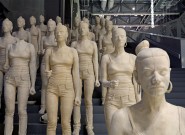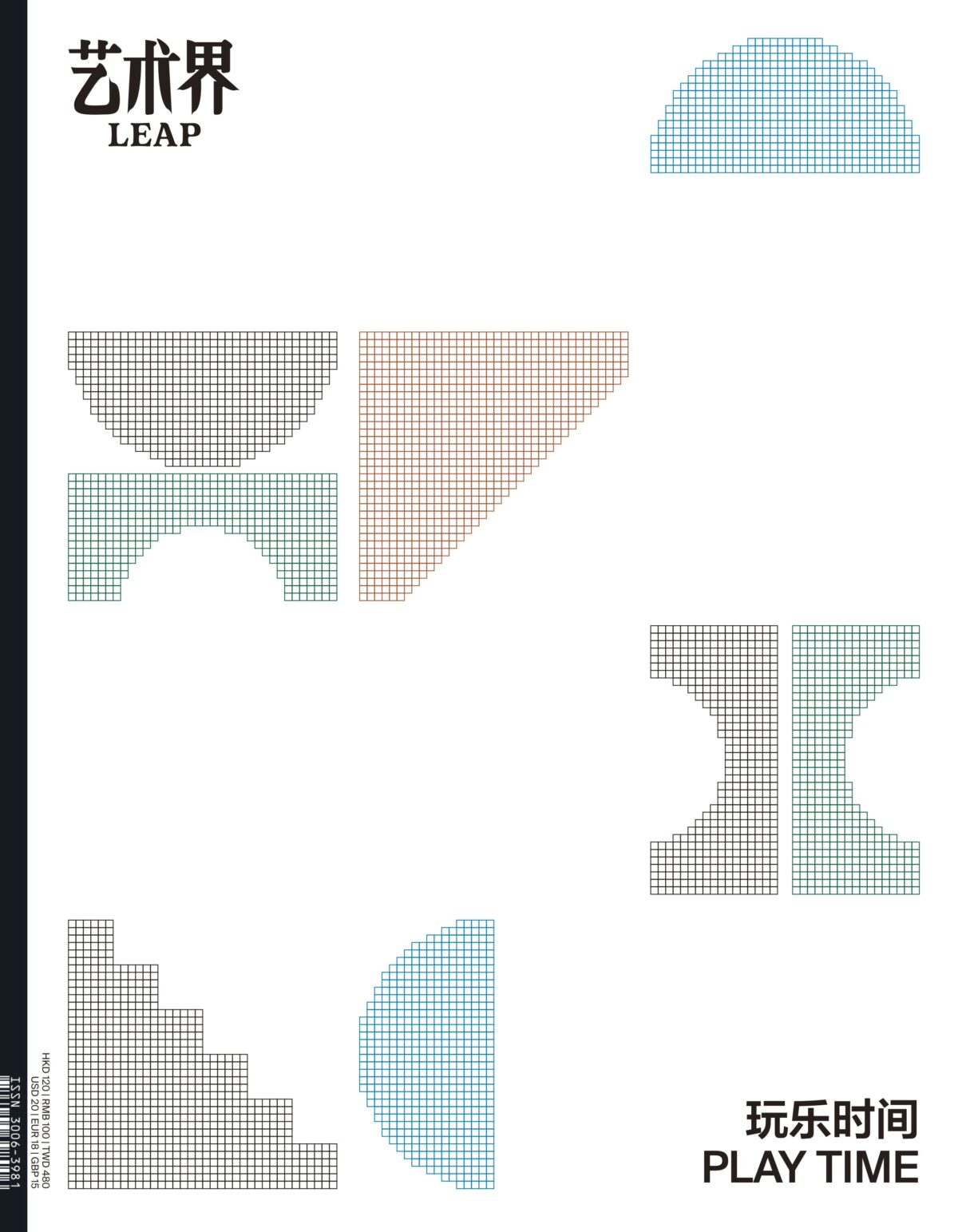The use of everyday materials within the art museum or gallery in order to disrupt the symbolist power structures they harbor is a rebellious act common among conceptual artists, the target of such acts often being the obsessive materialism of developed consumerist societies. As Guy Debord declared penetratingly: “In societies where modern conditions of production…
Read More“The Second Round With a Whip” exhibits two new series of large-scale oil paintings by Xie Nanxing, at first glance a strange combination of interior design mock-ups and mottled abstraction sloppily thrown together without much consideration, even with a slight hint of uncoordinated humor. Continuing on from his last solo exhibition in the same space…
Read MoreCui Jie’s works: one group is paintings of people, the other of cities. All of the cities are ghost towns, empty of any trace of human life. When humans are present, they have their backs turned in gestures of total rejection; even figures that appear together are indifferent to their companions, the sense of distance…
Read MoreWhen it comes to Gao Yu and his paintings, there has been a cacophony of voices and opinions, both praise and criticism tightly bound to the concept of cartoon. It is undeniable that Gao’s recognition in contemporary art circles is closely connected the cartoon as a cultural phenomenon. Until just before the 2008 global economic…
Read MoreAida Makoto’s reputation has always been confined within Japan— that he has never been taken under the wings of some international curator cements his status as an “underrated artist.” This retrospective can be regarded as fair payment for his life’s work, collecting a large number of Makoto’s works from the early 1990s to the present….
Read MoreAs curator Kaneshima Takahiro stated in his preface, the exhibition “Parallel Worlds” presents a way to understand the world from the viewpoint of plurality. The concept of plurality here refers to a process of knowledge generation, which is based on reflection and introspection, of modernity and the subsequent reality of homogenization. Thus, the plurality underpinning…
Read MoreIn the 1953 Another World, a newly-nuclear citizenry comes to the rueful realization that they “should have been more suspicious of God’s gift of nuclear power.” A collaboration between Jikken Kōbō visionary Kitadai Shōzō and composer Yuasa Jōji, the nine-minute “auto-slide show” syncs a projection and tape recorder to “animate” Kitadai’s neo-Constructivist compositions. The tale…
Read MoreFor those counting, the Guangzhou Triennial has lost its tri-annual rhythm. In fact the latest installment comes not three but four years after Gao Shiming’s “Farewell to Postcolonialism” of 2008. This fuzzy math was reconciled with a series of precursor exhibitions that began with “Meta Question—Back to the Museum Per Se,” a title that aptly…
Read MoreTwenty years on from its first edition, the 7th Asia Pacific Triennial of Contemporary Art (APT7) continued to provide audiences with an unsurpassed opportunity to view a diverse selection of work by artists from across the Asia Pacific region. As a core program of the Queensland Art Gallery of Modern Art (QAGOMA), the APT has…
Read MoreThis gesture sets an example: Hauser & Wirth Zürich shows 17 brand-new canvases by a Chinese painter. A major part of the 2012 production of the Shanghai-based Zhang Enli, these are taken directly from the studio to the eyes of the viewer, who smells the fresh oil paint in the space. For Zhang, this exhibition…
Read MoreThese new works by Zhan Wang continue his explorations of the nature of the universe and the forms that make up our understanding of it. Long March’s galleries have been divided into two areas, which might be characterized as a light space and a dark space. The light space presents floor- and wall-mounted panels of…
Read MoreUpon entering Matthias Küper, one can easily be baffled by the show’s half-installed state. A roll of foam-wrap sits in the corner while several photographs rest against the room’s walls, ready to be hung. Cai Dongdong invites the viewer into a fragmented realm, one not yet done but not quite undone; his use of carefully…
Read More“Not Included” suggests to the viewer a program for contemporary art to follow, which is to continuously transform questions about its operating mechanisms into artworks. In this sense, “Not Included” is focused on providing a candid description of the ambiguous boundaries in Lu Pingyuan’s relationship with his creations. This is not the type of inclusive…
Read MoreCurated by Biljana Ciric, the series “Alternatives to Ritual” takes the idea of artists’ museums from Documenta 5 as its departure point. Six artists were invited to show their works throughout the Goethe-Institut offices as a group exhibition. Each artist also takes turns exhibiting a solo project in the public Open Space. Additionally, special events…
Read MoreI traveled from Beijing to Guangzhou, and hopped on a four-hour bus ride back north. The subtropical scenery outside the window speeding past was no longer a novelty for this secondtime guest from the north, and I was drowsy all the way. It has been eight years since curator Duan Yuting signed his ten-year contract…
Read MoreSpanning 30 years, “Material-ism” is a comprehensive retrospective of Yung Ho Chang and his architecture atelier’s body of work. The exhibition includes 6 installation modules, 40 models and 270 drawings and blueprints. The result is a full picture of Chang’s practice and explorations of architecture, culture, and art. A majority of Yong Ho Chang’s drawings…
Read MoreRoughly speaking, so-called contemporary art has existed in China for more than 30 years. Any list of its representative artists would include Wang Guangyi, who has certainly become— in his own words— “an artist of significance.” So as a retrospective of his works, “Thing-In-Itself: Utopia, Pop, and Personal Theology” must face questions such as these:…
Read MoreIt was a series of very fortunate events that led Boris Groys to his discovery of the photographs and postcards that became “After History: Alexandre Kojève as a Photographer.” It could be said that Kojève is partially responsible for popularizing the concept of “post-history,” or what happens after history ends. It remains his greatest contribution…
Read MoreThe wall text for Chen Shaoxiong and Liu Ding’s “Project Without Space” characterizes it as an “iteration,” suggesting a serial repetition— one instance on top of the last, in a process of refinement. Now that it has reached its sixth version, what lessons can we draw from these critical installations? Spread over three rooms, “Project…
Read MoreOn the opening day of the Shanghai Biennale, young artist Simon Fujiwara explained his contribution, titled Rebekka (2012), to me and another artist couple: around 20 full-body casts stationed together, occupying half of a stairway that leads into the exhibition hall. Pointing at the face of one of these clay models, he tells us that…
Read More




